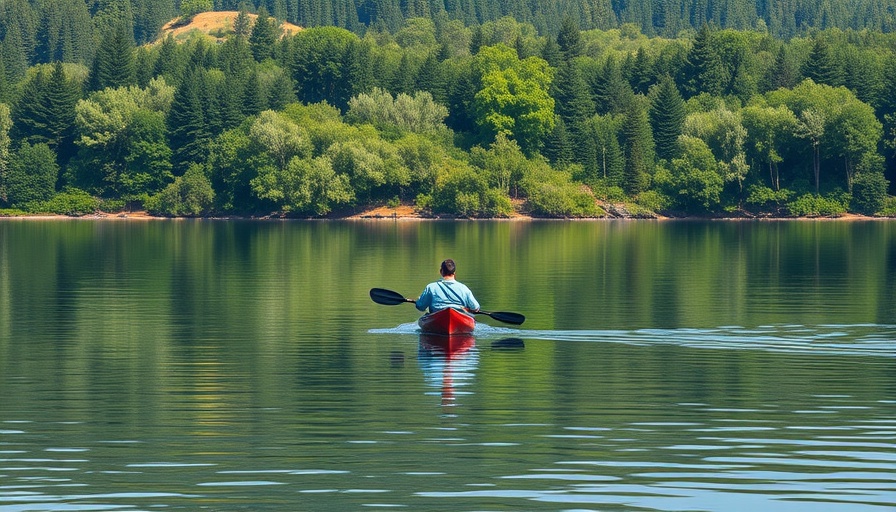
A Milestone for Renewable Energy in Pennsylvania
On a sunny Wednesday in April, the Pennsylvania Department of Conservation and Natural Resources (DCNR) unveiled the state's 30th public solar array at Gifford Pinchot State Park, enhancing Pennsylvania's commitment to renewable energy. This 342-kilowatt solar array is not merely an addition to the park but represents a significant milestone in the Commonwealth's journey towards sustainability, making a meaningful impact on the community and environment.
Combining Functionality with Sustainability
Installed strategically at the Quaker Race Day Use Area, the solar array does more than generate clean electricity; it also provides much-needed shade for vehicles in the parking lot. As DCNR Secretary Cindy A. Dunn pointed out, this fusion of renewable energy with practical utility exemplifies how we can address climate challenges while enhancing visitor experiences at state parks. The project aligns with the DCNR's mission of managing Pennsylvania’s natural resources sustainably, a goal it has pursued for the past 30 years.
The Economic Impact of Solar Initiatives
The new solar installations are poised to save Pennsylvania taxpayers over $45,000 annually and reduce the carbon footprint of the DCNR by more than 163 metric tons each year. This reduction is comparable to removing 38 cars from the roads, emphasizing both the environmental and economic benefits of investing in clean technology. Additionally, when combined with a 410-kilowatt solar array near the park’s sewage treatment plant, total annual savings are expected to exceed $100,000.
Support for Governor Shapiro’s PA PULSE Initiative
These solar projects complement the ambitious goals of Governor Josh Shapiro’s PA PULSE initiative, which aims to power half of Pennsylvania’s government operations through renewable sources by 2026. This not only demonstrates an aggressive approach to combating climate change but also highlights the administration's commitment to green energy, which supports both local economies and the environment.
Future Prospects: Commitment to 50% Renewable Energy by 2030
The DCNR is targeting a 50% reduction in carbon emissions by 2030 through solar infrastructure as a core element of its energy strategy. The agency is not merely investing in solar installations but is also engaging local companies like the Harrisburg-based McClure Company for broader infrastructure upgrades across 38 state parks and five forest districts. This approach underscores the synergy between clean energy initiatives and job creation, projected to result in a savings of over $40 million for the Commonwealth over the next two decades.
The Broader Perspective: Clean Energy's Role in Community Wellbeing
Beyond fiscal savings and carbon offsets, initiatives like these contribute significantly to the health of natural ecosystems. Marci Mowery, President of the Pennsylvania Parks and Forests Foundation, emphasized that such investments ensure our public lands remain vibrant and accessible for all generations. By prioritizing sustainability, Pennsylvania is not only working toward cleaner energy but also preserving natural spaces vital for recreation and wildlife.
Engaging Communities Through Renewable Projects
As more solar arrays pepper the landscape of Pennsylvania, community engagement becomes vital. Educating residents on the benefits of renewable energy can foster a culture of sustainability, where individuals take active steps in their own lives to support green initiatives. Public projects like the one at Gifford Pinchot State Park are excellent starting points for discussions on energy consumption, conservation, and what can be done at the grassroots level.
In conclusion, the unveiling of Pennsylvania's 30th solar array is not just a milestone but a beacon of hope for future sustainability efforts. It invites Pennsylvanians to reflect on their role in safeguarding the environment while enjoying the natural beauty of their state parks.
As this exciting initiative unfolds, residents are encouraged to explore their local parks, engage in community discussions regarding renewable energy, and advocate for continued efforts in sustainability. Every action counts towards a cleaner, healthier future.
 Add Row
Add Row  Add
Add 




 Add Row
Add Row  Add
Add 

Write A Comment